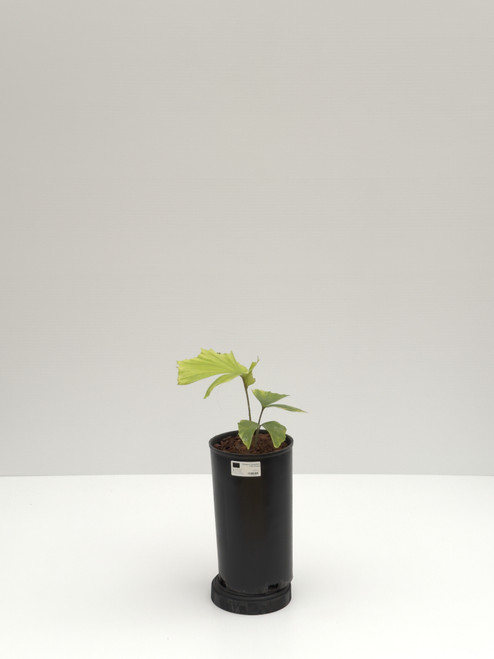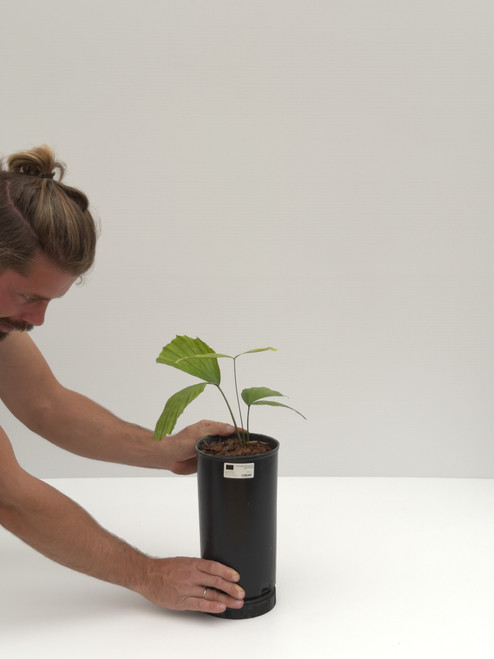Product Description
Habitat and Distribution
China South-Central, China Southeast, and Vietnam. Lowland to montane rain forests, often on limestone soils; below 1400 m. Guangxi, Guizhou, Yunnan (Vietnam).
Description
Stems clustered, with few stems per cluster, to 3 m tall, 2-4 cm in diam. Leaves borne almost all along stem; petioles 80-150 cm; rachis 1-2.5 m; primary pinnae 4-9 per side of rachis; secondary pinnae 5 or 6 per side of secondary rachis, with scarcely jagged margins and short apices. Inflorescences borne among leaves, to 1 m; rachillae 1-3, 30-40 cm; male flowers to 17 mm; sepals 3-5 mm; petals purple to maroon, about 17 mm; stamens 60-75; female flowers to 8 mm; sepals 3-5 mm; petals 5-8 mm. Fruits brownish purple, globose, to 3.5 cm in diam. Editing by edric.
Comments and Curiosities
If you think a Caryota will get way too large for your garden, consider this plant from subtropical forests in southern China and Vietnam: This well-behaved dwarf species will grow no taller than 3 m (10 ft.), sporting densely clustering, slender trunks and graceful bipinnate leaves. Apart from its small size, it is immediately recognized by its inflorescence that consists of a single, unbranched spike. Caryota monostachya is a little-known species that still is extremely rare in cultivation. (RPS.com)





































